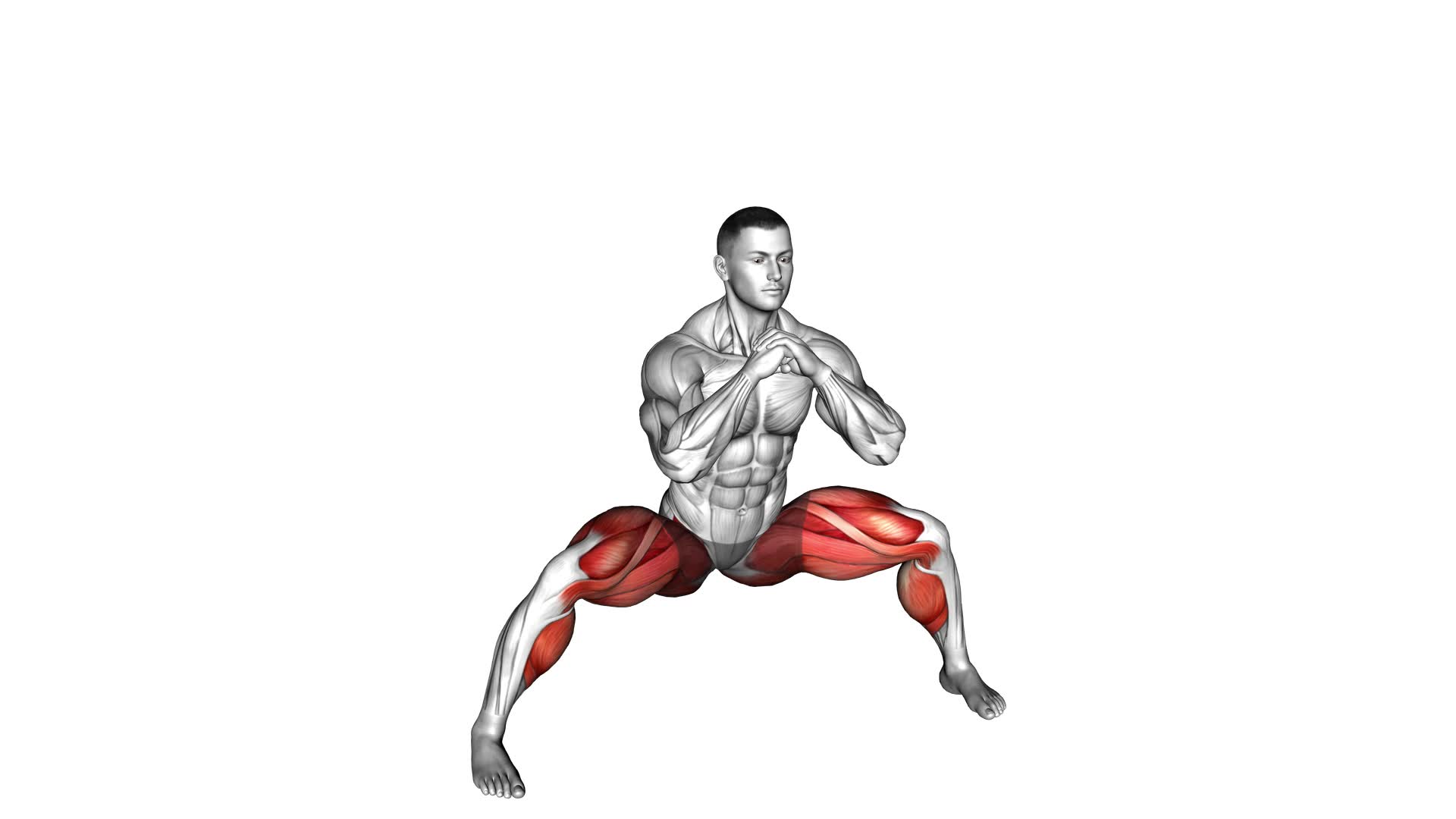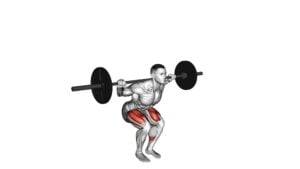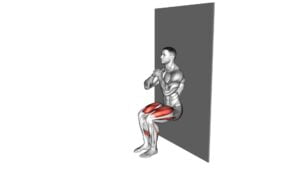Horse Stance Squat (male) – Video Exercise Guide & Tips

Looking to strengthen your lower body? Check out our video exercise guide for the Horse Stance Squat (male).
Watch This Exercise Video
In this guide, we'll show you the proper form and technique to maximize your workout. Discover variations and modifications specifically designed for men, as well as common mistakes to avoid.
With our tips, you'll be able to take your Horse Stance Squat to the next level and achieve your fitness goals. Let's get started!
Key Takeaways
- Horse Stance Squat increases lower body strength and improves balance and stability.
- The proper form and technique for the Horse Stance Squat include maintaining a wide stance, engaging core muscles, and keeping knees in line with toes.
- Variations and modifications for males include the Sumo Squat, Goblet Squat, Pistol Squat, and weighted squats.
- Common mistakes to avoid during the Horse Stance Squat include improper alignment of feet and knees, not going low enough in the squat, and rounding the back or hunching shoulders.
Benefits of the Horse Stance Squat
You can experience several benefits from incorporating the Horse Stance Squat into your workout routine. This exercise is highly effective for increasing lower body strength and improving balance and stability.
The Horse Stance Squat primarily targets the muscles in your lower body, including your quadriceps, hamstrings, glutes, and calves. By regularly performing this exercise, you can expect to see significant improvements in your leg strength. This won't only enhance your overall athletic performance but also make daily activities, such as walking and climbing stairs, easier and more efficient.
In addition to increased lower body strength, the Horse Stance Squat also helps improve balance and stability. This exercise requires you to maintain a wide stance, which challenges your ability to stay centered and grounded. As you squat down and rise back up, your core muscles are engaged to stabilize your body. Over time, this will enhance your body's ability to maintain balance, reducing the risk of falls and injuries.
Incorporating the Horse Stance Squat into your workout routine can have a significant impact on your lower body strength, balance, and stability. So, whether you're an athlete looking to improve performance or someone seeking functional fitness, this exercise is a valuable addition to your fitness regimen.
Proper Form and Technique for the Horse Stance Squat
To perform the Horse Stance Squat correctly, maintain a wide stance and engage your core muscles while squatting down and rising back up. Proper form and technique are crucial to maximize the benefits of this exercise and prevent injury.
One common error isn't maintaining proper alignment throughout the movement. Ensure that your knees are in line with your toes and avoid letting them collapse inward or push too far forward.
Another mistake is rounding your back or hunching your shoulders forward. Keep your back straight and your chest lifted throughout the entire squat.
It's also important to lower yourself down until your thighs are parallel to the ground or slightly below, but avoid going too low as this can strain your knees.
As you rise back up, focus on pushing through your heels and squeezing your glutes to return to the starting position. By maintaining proper alignment and form, you'll get the most out of your Horse Stance Squat.
Now, let's explore some variations and modifications for males.
Variations and Modifications for Males
To maximize the benefits of the Horse Stance Squat and cater to individual needs, there are various variations and modifications available for males.
These variations help target different muscle groups and add variety to your workout routine.
One popular variation is the Sumo Squat, where you stand with your feet wider than shoulder-width apart and toes pointed outwards. This targets the inner thighs and glutes more intensely.
Another variation is the Goblet Squat, where you hold a kettlebell or dumbbell close to your chest while performing the squat. This helps increase upper body engagement and core stability.
For those looking to challenge themselves further, the Pistol Squat is a great option. This advanced variation involves squatting on one leg while keeping the other leg extended in front. It requires exceptional balance and strength.
In addition to variations, there are also male-specific modifications that can be made to the Horse Stance Squat.
If you're looking to build more strength and size in your lower body, you can incorporate weighted squats by using a barbell or dumbbells. This added resistance will help stimulate muscle growth.
If you have flexibility issues, you can use a bench or box to reduce the range of motion and make the exercise more accessible.
Another modification is the use of resistance bands, which can be wrapped around the thighs to increase resistance and activate the muscles to a greater extent.
Remember to always listen to your body and choose the variation or modification that best suits your goals and abilities.
Common Mistakes to Avoid During the Horse Stance Squat
To ensure proper form and get the most out of your Horse Stance Squat, it's important to avoid these common mistakes.
- One of the most common mistakes isn't maintaining proper alignment. Make sure your feet are shoulder-width apart and parallel to each other, with your knees tracking over your toes. Avoid letting your knees cave inwards or flare outwards during the movement.
- Another common mistake isn't going low enough in the squat. Aim to lower your hips until your thighs are parallel to the ground or slightly below. Going too shallow can limit the effectiveness of the exercise.
- Additionally, avoid rounding your back or hunching your shoulders forward. Keep your chest lifted and your spine neutral throughout the movement.
- Finally, be mindful of your breathing. Don't hold your breath during the squat. Inhale as you lower down and exhale as you push back up.
Tips for Maximizing Your Horse Stance Squat Workout
For maximum results in your Horse Stance Squat workout, focus on maintaining proper form and engaging your leg muscles. To maximize the benefits of this exercise, it's important to be aware of common misconceptions and incorporate advanced training techniques.
One common misconception is that the Horse Stance Squat is solely a leg exercise. While it does primarily target the leg muscles, it also engages the core, glutes, and lower back. To fully engage these muscles, make sure to keep your back straight, chest lifted, and core tight throughout the movement.
Another misconception is that going deeper into the squat is always better. While it's important to challenge yourself, going too deep can put unnecessary strain on your knees and lower back. Instead, focus on achieving a comfortable depth that allows you to maintain proper form and engage your muscles effectively.
To take your Horse Stance Squat workout to the next level, consider incorporating advanced training techniques. This can include adding weights such as dumbbells or kettlebells to increase resistance and intensity. You can also experiment with different variations, such as pulsing at the bottom of the squat or incorporating jump squats for an added cardiovascular challenge.
Frequently Asked Questions
How Many Calories Can I Burn by Doing the Horse Stance Squat?
You can burn a significant number of calories by doing the horse stance squat. The exact amount depends on factors such as your body weight, intensity, and duration of the exercise.
However, it's estimated that you can burn around 200-300 calories per hour with this exercise.
Keep in mind that variations and modifications, such as adding weights or increasing the depth of the squat, can further increase the calorie burn.
Can the Horse Stance Squat Help Improve My Balance and Stability?
The horse stance squat is a great exercise to improve balance and stability. By engaging your core and lower body muscles, it helps strengthen the muscles that support your balance.
The horse stance squat benefits also include improved leg strength and flexibility. Additionally, there are various variations of the horse stance squat that you can try to challenge yourself and target different muscle groups.
Is It Safe to Perform the Horse Stance Squat if I Have Knee or Hip Problems?
If you're dealing with knee pain or hip pain, you may be wondering if it's safe for you to perform the horse stance squat.
It's important to consult with a healthcare professional before attempting any new exercises, especially if you have preexisting conditions. They can evaluate your specific situation and provide guidance on whether or not this exercise is suitable for you.
Safety should always be a top priority when it comes to your fitness routine.
How Often Should I Incorporate the Horse Stance Squat Into My Fitness Routine?
To effectively incorporate the horse stance squat into your fitness routine, consider holding the squat for 30-60 seconds. This will help build strength and endurance in your lower body.
If you're a beginner, it's important to start with modifications. You can use a wall or a chair for support until you feel comfortable doing the exercise without assistance.
Remember to listen to your body and adjust the intensity as needed.
Can the Horse Stance Squat Help Increase My Lower Body Strength and Muscle Mass?
The horse stance squat is a great exercise for increasing lower body strength and muscle mass. By incorporating this exercise into your fitness routine, you can target your quadriceps, glutes, and hamstrings.
Additionally, the horse stance squat can help improve flexibility in your hips and lower back. To keep things interesting, try different variations of the horse stance squat, such as adding weights or performing pulses.
Remember to maintain proper form and consult a professional if you have any concerns.
Conclusion
In conclusion, the horse stance squat is a beneficial exercise for males that helps improve lower body strength and stability. By maintaining proper form and technique, variations can be added to target specific muscle groups.
It's important to avoid common mistakes and follow the tips provided to maximize the effectiveness of your horse stance squat workout. Incorporate this exercise into your routine for a stronger and more powerful lower body.

Author
Years ago, the spark of my life’s passion ignited in my mind the moment I stepped into the local gym for the first time. The inaugural bead of perspiration, the initial endeavor, the very first surge of endorphins, and a sense of pride that washed over me post-workout marked the beginning of my deep-seated interest in strength sports, fitness, and sports nutrition. This very curiosity blossomed rapidly into a profound fascination, propelling me to earn a Master’s degree in Physical Education from the Academy of Physical Education in Krakow, followed by a Sports Manager diploma from the Jagiellonian University. My journey of growth led me to gain more specialized qualifications, such as being a certified personal trainer with a focus on sports dietetics, a lifeguard, and an instructor for wellness and corrective gymnastics. Theoretical knowledge paired seamlessly with practical experience, reinforcing my belief that the transformation of individuals under my guidance was also a reflection of my personal growth. This belief holds true even today. Each day, I strive to push the boundaries and explore new realms. These realms gently elevate me to greater heights. The unique combination of passion for my field and the continuous quest for growth fuels my drive to break new ground.







